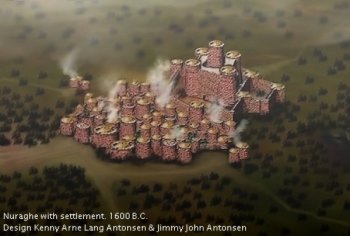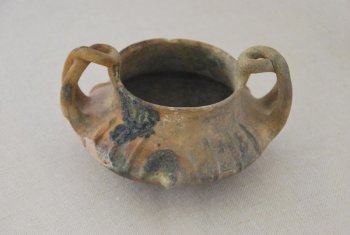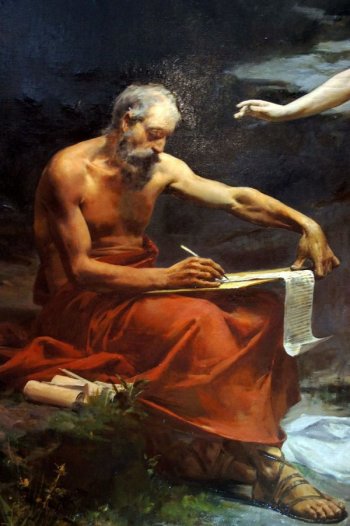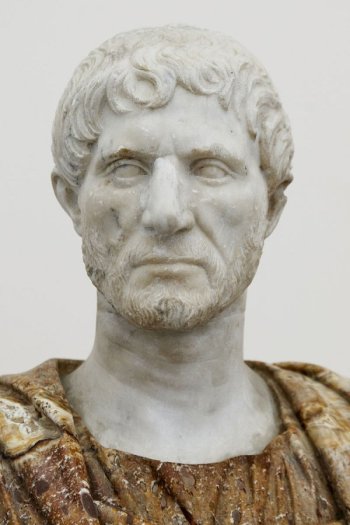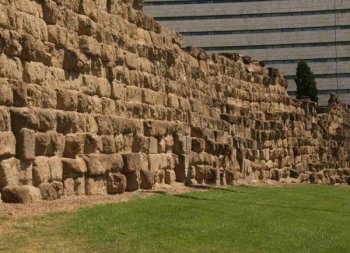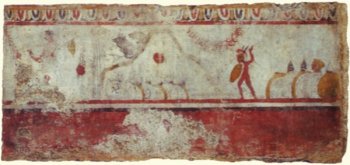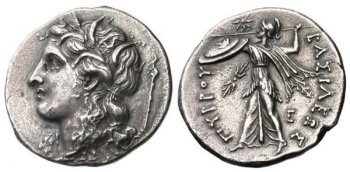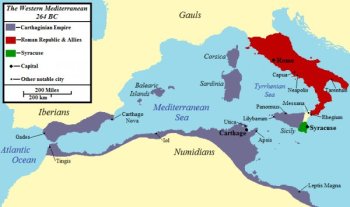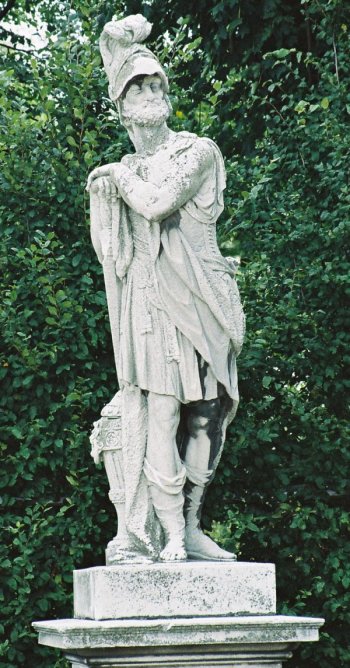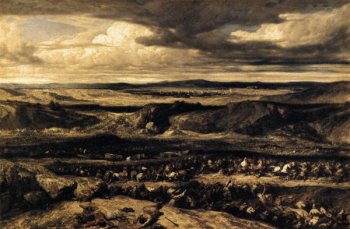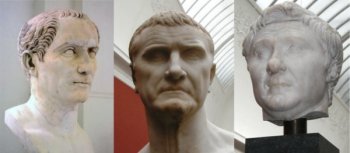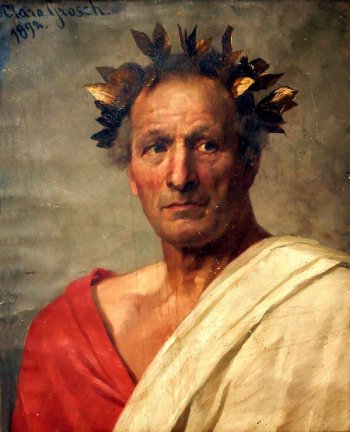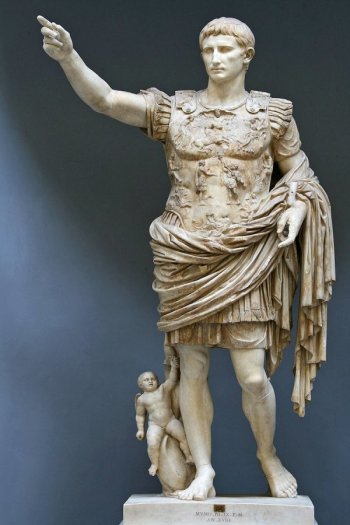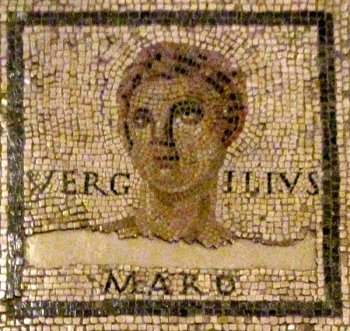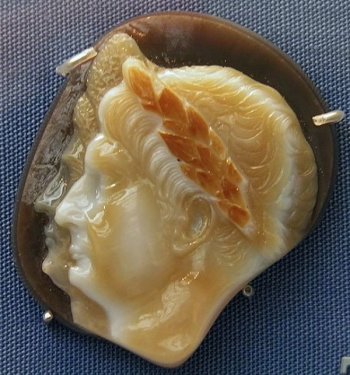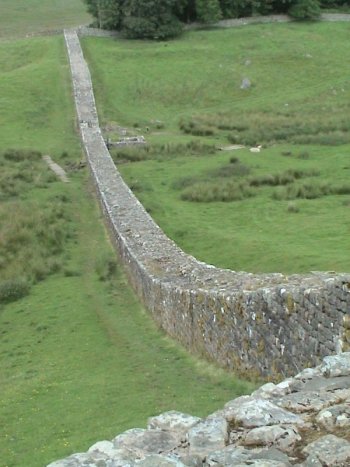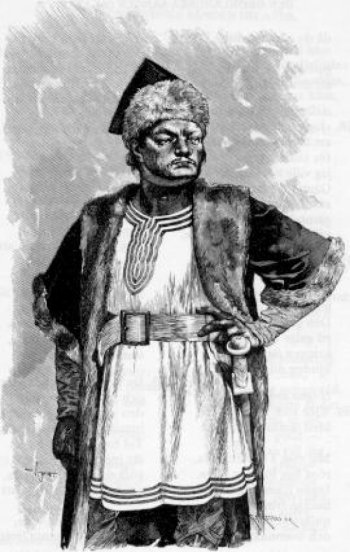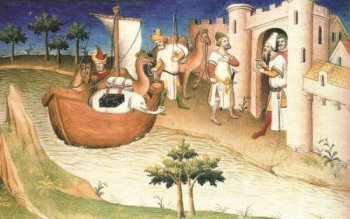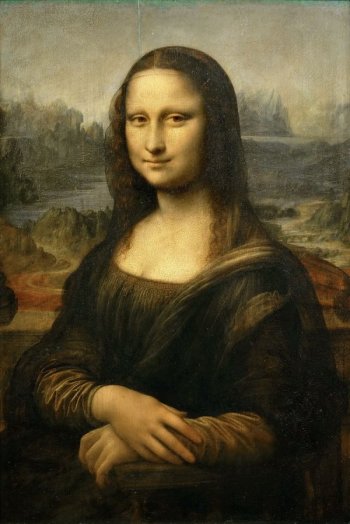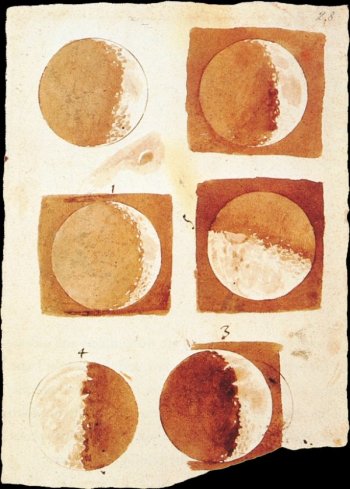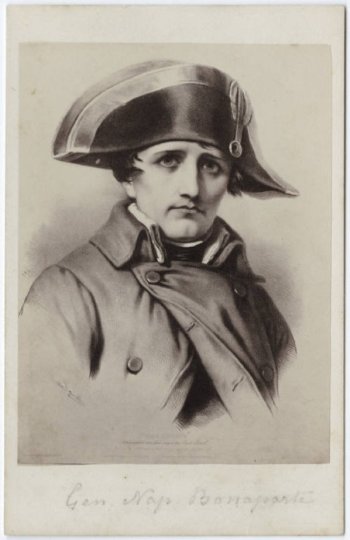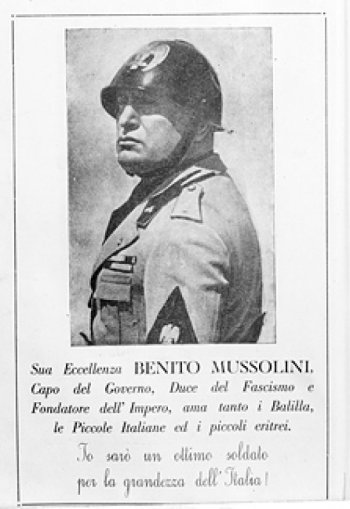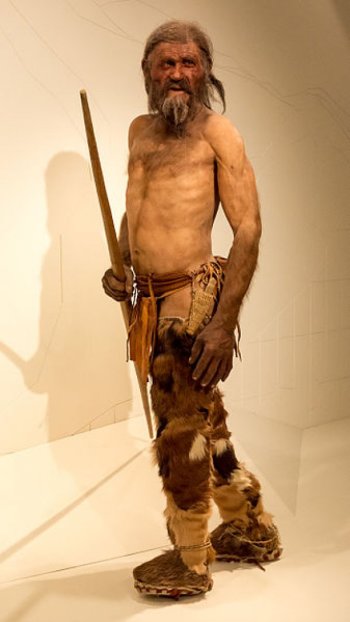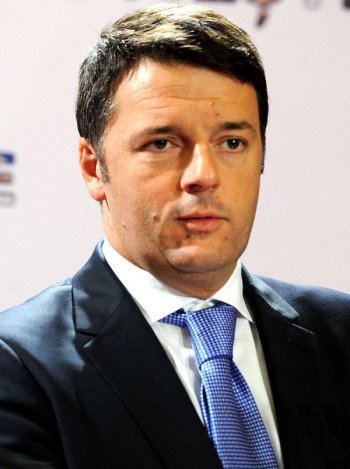History: Historical Timeline
Prehistory
| Date | Event |
|---|---|
| c. 48,000 BCE | Neanderthals roam the region that later becomes Italy. |
| c. 41,000 BCE | Cro Magnon settlements begin to be established, mainly on high ground. |
| c. 3400–2400 BCE | The Remedello culture, a group of migrating Indo-Europeans, settle in the Po Valley. |
| c. 3359–3105 BCE | A prehistoric man from the Copper Age dies in the mountains of the South Tyrolean region and is buried in ice, a process which naturally mummifies his body. |
| c. 1800 BCE | The Nuragic civilization begins to build its signature fortress towers on the island of Sardinia. Remains of approximately 7,000 of the structures endure into the 21st century CE. |
| c. 1100–700 BCE | The Villanovan culture settles here. Villanovans bury their cremated dead in urns that resemble small huts. |
| c. 799–700 BCE | The first Greek settlers begin to arrive in Southern Italy. The coastal areas become so heavily populated with people from varous parts of Greece that the Romans later refer to the region as Magna Graecia (Great Greece). |
The Etruscans and Early Romans
| Date | Event |
|---|---|
| c. 768 BCE | The Etruscan culture begins to supplant the Villanovans. |
| 753 BCE | April 21. According to the foundation myth of Rome, twin brothers Romulus and Remus decide to establish a city along the Tiber River. After an argument over which hill to use as a starting point, Romulus kills his brother and then proceeds to build the city named for him on the Palatine Hill. |
| 715 BCE | Numa Pompilius, a man of Sabine heritage, becomes Rome's second king a year after the death of Romulus. He has tremendous influence in establishing the various religious rites and institutions that Roman society practices for centuries. |
| c. 700 BCE | The earliest inscriptions in the Etruscan language appear. Although the origins of the language and its people are unclear, the writing system itself derives from the western Greek alphabet. In turn, the Etruscan alphabet becomes the parent of the Latin or Roman alphabet used by much of the world today. |
| 616 BCE | Lucius Tarquinius Priscus, an Etruscan, becomes Rome's fifth king. During his reign, he orders the construction in Rome of the Circus Maximus, the largest stadium of both the Roman Kingdom and the eventual Roman Empire, as well as the Cloaca Maxima, one of the world's first extensive sewer systems. |
| 578 BCE | Servius Tullius, the second ruler in Rome's Etruscan dynasty, takes over as the city's sixth king after the murder of his predecessor. One of the kingdom's first major reformers, he expands Roman citizenship and works to improve the lives of the city's lowest classes. He also introduces the first true Roman coinage to the kingdom. |
| 540 BCE | Phocaean Greeks, after fleeing the incursions of Cyrus the Great, establish Elea in Magna Graecia. Their increasing presence, all the way up to their colony of Massalia (what is later Marseille in France), and piracy in the Tyrrhenian Sea lead the Etruscans of Etruria and Punics of Carthage to form an alliance against the Greeks which culminates in the Battle of Alalia. In the aftermath, the Etruscans gain control of Corsica |
| 535 BCE | The final Etruscan king of Rome, Lucius Tarquinius Superbus, also known as Tarquin the Proud, takes over the throne through the assassination of Servius Tullius. Unpopular during his reign because of his disregard of the law, murder of several senators, and his practice of judging capital crimes himself without the advice of counsel, he inadvertently sways the populace against the monarchy. |
The Roman Republic
| Date | Event |
|---|---|
| 509 BCE | After Tarquin's son, Sextus, rapes a noblewoman named Lucretia and she commits suicide, the Roman people have had enough of the monarchy and exile the king. Lucius Junius Brutus (the grandson of King Lucius Tarquinius Priscus) and Lucretia's husband, Lucius Tarquinius Collatinus, another of the former king's relatives, are elected as Rome's first consuls, a move which establishes the Roman Republic. |
| 474 BCE | In the naval Battle of Cumae, the combined forces of Cumae and Syracuse defeat the Etruscans in the Bay of Naples. The loss further weakens an already declining Etruria. |
| 396 BCE | Roman dictator Marcus Furius Camillus and his forces conquer Veii, the richest city-state in the Etruscan League and a longtime rival to Rome's power in the region. |
| c. 390 BCE | July 18. During the Battle of the Allia, Rome is sacked by the Senones, a Gallic tribe, who destroy most of the city's records. Rome's lack of adequate protection during the battle leads to the construction of the Servian Wall around the city. Small sections of the ancient wall remain into the 21st century CE. |
| 340–338 BCE | The victory of Rome in the Second Latin Wars results in the dissolution of the Latin League, giving the republic dominion over the Latium region. |
| 343–290 BCE | Rome battles the Samnites in a series of three wars. After its final victory, Rome controls much of the central portion of the Italian peninsula. |
| 312 BCE | The Aqua Appia, the first of the city of Rome's 11 aqueducts, is commissioned. |
| 280–275 BCE | The Pyrrhic War pits Rome and Carthage against the forces of Epirus, Magna Graecia, and Samnium. Rome's costly final victory over King Pyrrhus of Epirus, the premier military leader of his time, gives it control of the entire southern portion of the peninsula and raises Rome's reputation in the Mediterranean region. |
| 264–241 BCE | The First Punic War sees the regions two strongest powers, Carthage and Rome, battling over Sicily. Carthage's defeat results in the bulk of Sicily becoming Rome's first province outside of the peninsula. |
| 238–237 BCE | Claiming that the Carthaginian navy has been attacking Roman shipping, Rome annexes the empire's islands of Sardinia and Corsica. Carthage, badly weakened by both the First Punic War and its own Mercenary War, immediately surrenders when Rome again declares war on it. |
| 218 BCE | Carthaginian general Hannibal surprises Rome by leading a force of Iberians, along with war elephants, over the Alps at the start of the Second Punic War. Although his forces devastate the Italian countryside, Hannibal's lack of adequate reinforcements from Carthage prevent him from taking the city. |
| 214–212 BCE | During the Siege of Syracuse, Rome defeats the last major Magna Graecia holdout in the region, enabling it to extend the borders of its Sicilian province to encompass the entire island and prevent Carthage from having a toehold in an allied kingdom from which to invade the Italian peninsula. Archimedes, the famous Greek mathematician, is killed by a Roman soldier during the siege, despite an order that he not be harmed. |
| 198–192 BCE | The Roman-Seleucid War results in the Seleucid Empire being forced to give up Asia Minor to the control of Rome's allies. Rome becomes the only significant power around the Mediterranean Sea. |
| 146 BCE | Longtime rival Carthage is burned to the ground by Roman forces at the end of the Third Punic War. Rome gains control of all of Carthage's North African and Spanish territories. |
| 113–101 BCE | In the Cimbrian War, Rome faces its most serious threat since the Second Punic War as it battles the Cimbri and the Teutones, two invading Germanic tribes who descend from Jutland to clash with the republic and its allies in Central, Southern, and Western Europe. By the end of the war, both Germanic tribes are almost completely annihilated. The Cimbrian War, along with the Jugurthine War fought in North Africa, leads to significant military reforms by Roman statesman and general Gaius Marius. |
| 73–71 BCE | The Third Servile War poses a serious threat to Rome as forces advance from the south toward the Eternal City. Starting out as a revolt by 78 gladiators primarily led by Spartacus, the resulting slave rebellion swells to a marauding band of 120,000 men, women, and children. The revolt is crushed when Spartacus' forces make a desperate full-fledged attack on the army of Roman general Marcus Licinius Crassus and are completely destroyed. |
| 60 BCE | Powerful politicians Gaius Julius Caesar, Marcus Licinius Crassus, and Gnaeus Pompeius Magnus (Pompey the Great) form an unofficial political alliance that is later called the First Triumvirate. The move allows them to completely dominate Roman politics until their bond begins to unravel. |
| 58–50 BCE | Roman proconsul Julius Caesar engages in a series of battles known as the Gallic Wars. During the conflicts, he also leads two expeditions into the islands that later become Britain, marking the first incursions of the Romans into the area. In the aftermath of the wars, Rome controls all of Gaul. |
| 49 BCE | January 10. After the death of Crassus in 53 BCE and the subsequent cooling of relations between Julius Caesar and Pompey that leads to the latter's not-so-subtle attempts to strip his former ally and father-in-law of his power, Caesar leads his forces across the Rubicon River, effectively causing a civil war. Later in the year he is named Dictator, with Marc Antony as his second in command. |
| 44 BCE | March 15. Julius Caesar is assassinated on the floor of the Senate. According to Roman historian Flavius Eutropius, at least 60 or more individuals participate in Caesar's murder, stabbing him 23 times. |
| 43 BCE | November 27. Marc Antony, Marcus Lepidus, and Octavian, Julius Caesar's adopted son, form the three-man dictatorship known as the Second Triumvirate. As the power bases of the three leaders increase, so do internal tensions. |
| 34 BCE | Antony and Cleopatra announce the Donations of Alexandria, which give their three children titles and authority over certain Roman and Parthian lands and elevate Caesarion, the son of Cleopatra and Julius Caesar, as the latter's legitimate heir over Octavian. This causes an irrevocable breach between Antony and Rome that contributes to the Final War of the Roman Republic. |
| 31 BCE | September 2. Octavian's Roman fleet, commanded by Marcus Vipsanius Agrippa, defeat the forces of Marc Antony and his lover, Cleopatra, in the naval Battle of Actium. |
| 30 BCE | August 1. Marc Antony commits suicide. August 12. Cleopatra follows her lover's lead by committing suicide, possibly by clutching an asp to her breast. August 23. Caesarion is killed on orders from Octavian. |
The Roman Empire
| Date | Event |
|---|---|
| 27 BCE | The Roman Senate grants Octavian imperium, a form of nearly absolute authority, and gives him the title Augustus which not only becomes his name, but which is also applied as an honorific to subsequent Roman emperors after his death. This event marks the beginning of the Roman Empire. |
| 19 BCE | Roman poet Virgil completes the Aeneid, a work of Roman mythology commissioned by Augustus which recounts the travels of Aeneas after the sacking of Troy, and creates the background for the foundation myth of Rome. |
| c. 17 CE | Titus Livius Patavinus, more commonly known as Livy, dies in Patavium. His monumental work, the History of Rome, is hugely popular during his lifetime. Although the work is later viewed as not entirely accurate, it nevertheless becomes a seminal text for students of Roman history. |
| 43 | Emperor Claudius begins the gradual invasion of Britain by Roman forces. |
| 64 | July 18–19. The Great Fire of Rome destroys much of the city. Emperor Many contemporanean Romans suspect that Nero caused the fire in order to make way for the Domus Aurea, his palatial complex, but this theory is challenged centuries later. |
| 70 | February. During the First Jewish-Roman War, the Roman army lays siege to Jerusalem. After seven months, the Romans manage to breach the wall, ransack the city, and destroy the city's famous Second Temple. To commemorate the event, the Arch of Titus is placed at the entrance to the Roman Forum. |
| c. 70–72 | Construction on the Flavian Amphitheatre—which in later years is called the Colosseum, in reference to the Colossus of Nero which once stood adjacent to it—begins on the site of a filled-in artificial lake created by Nero for his Domus Aurea. |
| 98 | January 28. Emperor Trajan begins his 19-year reign. Called optimus princeps (the best ruler) by the Roman Senate, he expands the territory of the Roman Empire to its fullest extent. |
| 117 | August 10. Hadrian is made emperor after the death of Trajan. During his reign he travels to almost every province, orders the building of Hadrian's Wall along the ancient northern border of Britannia, instigates the rebuilding of Rome's Pantheon, and oversees the construction of his massive private villa with its many architectural innovations. |
| 180 | March 17. Marcus Aurelius, the last of Rome's "Five Good Emperors," dies, leaving his son, Commodus, in charge. Commodus' reign is marked by megalomania and eccentricity, beginning the decline of the Roman Empire. |
| 303 | February 24. Emperor Diocletian's "Edict against the Christians" is published, which calls for the destruction of Christian scriptures and places of worship, as well as banning all Christian assemblies throughout the Roman Empire. This begins what becomes known as "The Great Persecution." |
| 306 | July 25. Emperor Constantin the Great, the first emperor to claim conversion to Christianity, becomes a champion for tolerance of the religion in the Roman Empire. |
| 380 | February 27. Theodosius I, the last Roman emperor to reign over a unified Roman Empire before its division into eastern and western parts, declares Nicene Trinitarian Christianity to be the empire's only legitimate religion and the only one to be referred to as Catholic. |
| 452 | Attila the Hun invades and devastates Northern Italy, but withdraws before attempting to capture Rome. |
| 476 | December 4. Emperor Romulus Augustus is deposed by Flavius Odoacer. Putting himself under the control of the Eastern Roman Empire, Odoacer effectively brings an end to the Western Roman Empire. |
The Middle Ages and The Renaissance
| Date | Event |
|---|---|
| 488 | Ostrogoth king Theodric the Great is ordered by Byzantine Emperor Zeno to overthrow Odoacer, who has become a thorn in the emperor's side. The resulting power shift eventually leads to the Gothic War. |
| 535–554 | The Ostrogoths and the Byzantine Empire fight the Gothic War. |
| 568 | Following the devastation and political instability of the Gothic War, King Albion of the Lombards leads his people in a mass migration onto the Italian peninsula. |
| 754 | Pepin the Younger conquers the Lombards and donates much of their land to the Catholic Church, effectively establishing the Papal States. |
| 800 | December 25. Pope Leo III crowns Charlemagne as Holy Roman Emperor. |
| 827 | Muslim forces begin a long military campaign in Sicily that results in the island becoming the Emirate of Sicily (831–1072). |
| 1130 | September 27. After decades of conquests and battles by various Norman forces, Roger II is crowned King of Sicily, a realm that includes the island and the entire southern half of the Italian peninsula. |
| 1271 | Seventeen-year-old Marco Polo, along with his father and uncle, sets off from the Republic of Venice toward Asia. |
| 1348 | The Black Death kills up to one third of Italy's population. |
| 1389 | September 27. Cosimo de' Medici is born. He becomes the first of several very influential leaders from the Medici family, and is also an important patron of the arts. |
| 1494–1559 | Italy is engaged in a long series of battles known as the Italian Wars, which involve not only most of the city-states and the Papal States of the peninsula, but also most of the major powers of Western Europe and the Ottoman Empire. |
| 1501–1504 | Michelangelo produces his massive sculpture, David, which later becomes an iconic symbol of the Italian Renaisance. |
| c.1503–1506 | Leonardo da Vinci paints the Mona Lisa, which becomes one of the most famous and most parodied paintings in the world. |
Early Modern Italy and Italian Unification
| Date | Event |
|---|---|
| 1559 | April 3. The Peace of Cateau-Cambrésis is signed, effectively giving Spain control over most of Italy. |
| 1616 | February 26. The Catholic Church orders Galileo to stop promoting the concept that the earth revolves around the sun. |
| 1630 | The plague kills up to one million people in Northern Italy. |
| 1656 | Up to 43 percent of the population of the Kingdom of Naples succumbs to the plague. |
| 1713 | A series of peace treaties known collectively as the Treaty of Utrecht is signed, transferring much of the control of Italy from Spain to Austria. |
| 1797–1799 | Napoléon, under the auspices of the French, invades and conquers most of Italy and establishes a string of new republics. |
| 1805 | March 17. Napoléon creates the Kingdom of Italy with himself as its monarch. |
| 1814–1861 | After the fall of Napoléon, a period of political and social changes known as the Risorgimento begins. The changes during this time serve to unify the emerging nation. |
The Kingdom of Italy
| Date | Event |
|---|---|
| 1861 | March 17. Victor Emmanuel is crowned King of Italy. |
| 1870 | France removes its troops from Rome during the Franco-Prussian War, a move which enables the forces of the Kingdom of Italy to take over the Papal State and absorb it into the kingdom. |
| 1915 | May 23. After initially remaining neutral during World War I, Italy joins the Allied Powers. |
| 1922 | October 22–29. The National Fascist Party under Benito Mussolini marches on Rome, resulting in Mussolini becoming the nation's 27th prime minister and effectively ruling the country. |
| 1929 | February 11. The Lateran Accord separates Vatican City in Rome from the Kingdom of Italy, making it a sovereign nation. |
| 1937 | December 11. After being widely condemned for its invasion of Ethiopia two years earlier, Italy officially withdraws from the League of Nations. |
| 1940 | June 10. Italy enters World War II as part of the Axis Powers. |
| 1943 | September 8. Italy essentially switches sides during the war by signing the Armistice of Cassibile with the Allies. However, the move also plunges the nation into civil war. |
| 1945 | April 28. Mussolini is executed for high treason. |
The Republic of Italy
| Date | Event |
|---|---|
| 1946 | June 26. The people of Italy vote to switch from a monarchy to a republic. Subsequently, all male members of the royal House of Savoy are banned from the country, an act that is not repealed until 2002. |
| 1957 | March 25, Italy signs the Treaty of Rome, a document which creates the European Economic Community. |
| 1969–1970 | During the "Hot Autumn," a series of massive strikes occur in Northern Italy over wages and working conditions. |
| 1978 | May 9. Former prime minister Aldo Moro is murdered by the Red Brigades after spending almost two months in captivity. The assassination is seen as one of the key events in the "Years of Lead," a period of intense social unrest and terrorism that stretches from the late 1960s through the early 1980s. |
| 1994 | May 10. Media mogul Silvio Berlusconi becomes the nation's 50th prime minister, a position he holds three times through 2011, despite allegations of corruption. |
| 2001 | September. German tourists discover human remains buried in ice in the Ötztal Alps. The remains turn out to be those of a prehistoric man from the Copper Age, making him the oldest natural mummy in Europe. The discovery of Ötzi the Iceman, as the corpse is named, creates a media sensation in Europe. |
| 2002 | The lira is replaced by the euro as Italy's currency. |
| 2005 | The constitution of the European Union is formally ratified by the Italian parliament. |
| 2008–2011 | Italy's economy shrinks as part of the global Great Recession. The International Monetary Fund (IMF) and the European Community (EU) impose severe austerity measures, angering the population and leading to mass protests. |
| 2009 | Earthquakes ravage the Abruzzo region of Italy. The disaster kills hundreds and leaves even more homeless. |
| 2014 | February 22. At 39 years of age, Matteo Renzi becomes Italy's 56th prime minister, beating Benito Mussolini's previous record as the youngest person to serve in that office since unification in 1861. |
| 2017 | The oldest Italian, Emma Morano passes away at 117 years of age. She witnessed three different centuries and 90 Italian governments during her lifetime. Monte Dei Paschi, the world's oldest bank and the bank at the center of Italy's banking crisis, is granted a state bailout. European Union regulators approve of the action. |
| 2018 | June. The country faces condemnation from human rights groups over the ongoing refugee crisis, with charges that ships are denied access to dock in Italy. So far, 13,808 migrant refugees have come to Italy by sea since the year began. December. Called the "Salvini decree,"—for Deputy Prime Minister Matteo Salvini, who backed the measure—a new law goes into effect that removes humanitarian protection status for migrants and makes it easier to strip migrants of Italian citizenship. As a result, dozens of migrants are removed from Italy's "welcome centers" and made homeless. Additionally, the law (called the Decree on Immigration and Security) imposes fines on nongovernmental rescue boats carrying migrants that attempt to dock in Italy, as well as denies the boats entry to or permission to stay in Italian waters, with threats of boat seizure. |
| 2019 | November–December. Protests are held against Matteo Salvini's far right political alliance, the first timed to coincide with a Salvini-and-friends rally to kick off election campaigning. Protesters cite Salvini's anti-immigration efforts, which may have led to his ouster from power after a new government was formed in August that relegated him from deputy prime minister and interior minister to an opposition party politician—though still leader of the far-right League party. |
| 2020 | February 21. Italy confirms its first case of the deadly COVID-19 virus, the spread of which is declared a pandemic by the World Health Organization on March 11. December 27. Three healthcare workers become the first Italians to receive the COVID-19 vaccine, almost ten months after the first Italian patient tested positive for the coronavirus. Changes are made to 2018's Decree on Immigration and Security—called anti-migrant by critics—that reinstates humanitarian protection for migrants that the original law removed. |
| 2021 | August 8. Italy takes home the country's most Olympic medals of a games yet, winning 10 gold, 10 silver, and 20 bronze medals at the Tokyo 2020 Olympic Games, which were postponed a year due to a global pandemic. August 11. Syracuse, Sicily is the site of the hottest temperature ever recorded in Europe, reaching 48.8 Celsius (119.8 Fahrenheit). |
Copyright © 1993—2024 World Trade Press. All rights reserved.

 Italy
Italy 